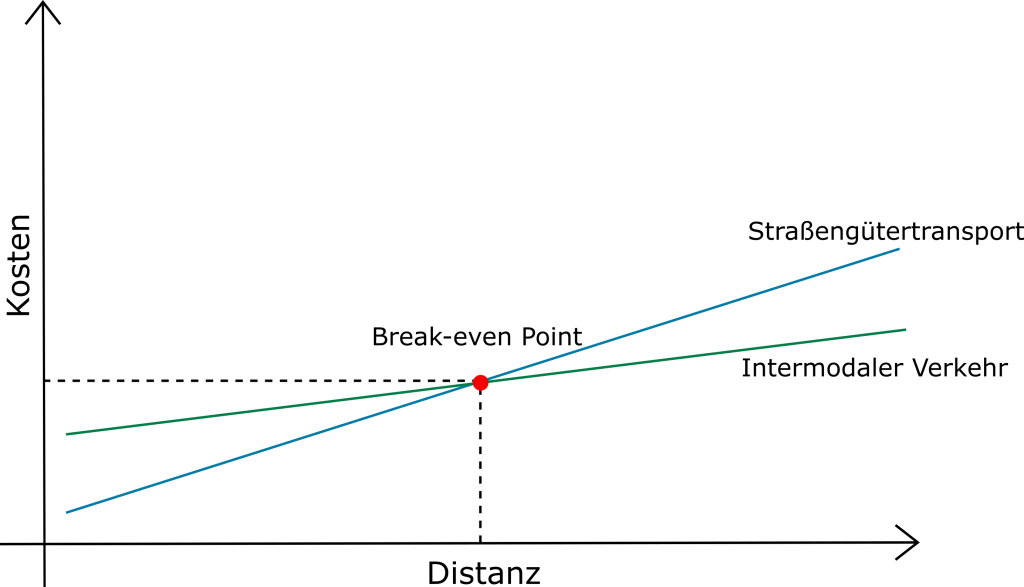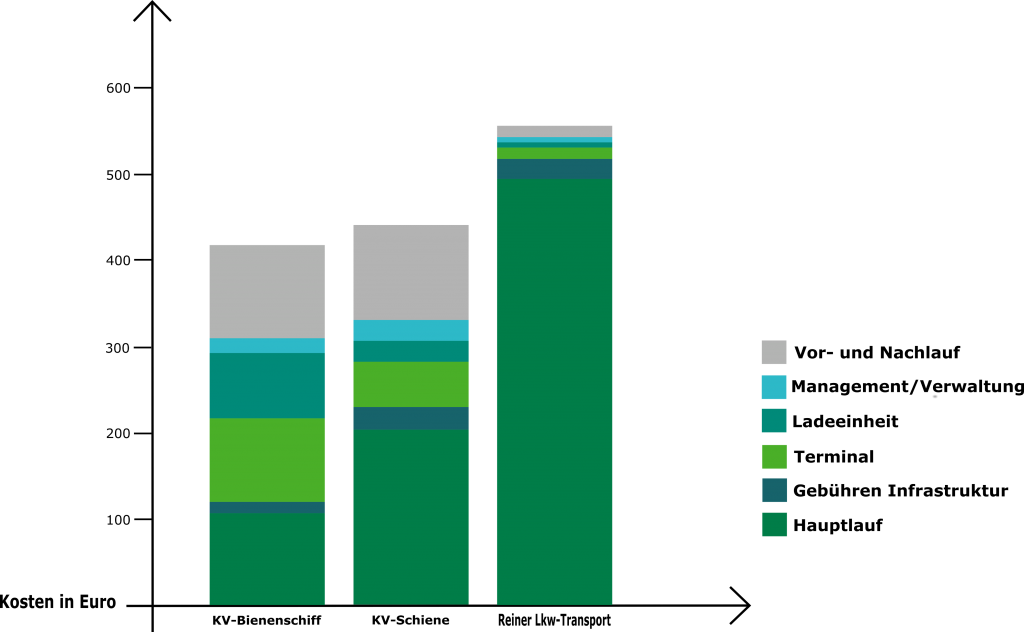Kosten im KV (en)
WHEN DOES CT PAY OFF?
From a certain distance and a certain quantity, the use of means of mass transport such as railway and barge has clear economic and ecological advantages over long-distance road freight transport. From this so-called “break-even point”, intermodal transports become more cost-effective than pure long-distance truck transports. In addition to the cost factor, the Combined Transport system also protects the environment and supports the shipping company in its environmental strategy. There is disagreement as to when the break-even point occurs. As a rule of thumb, economic and ecological advantages over pure road freight transport can be reckoned with from distances of 500 kilometers. However, in practice there are numerous examples where economic CT transport can be realized from distances of 300 kilometers, especially in seaport hinterland transport. For this reason, a case-by-case decision must be made when considering Combined Transport as an actual solution.1
Example
Hinterland transport of a 40-ft. container from Rotterdam to Frankfurt/Main. Various cost items are determined for the calculation of transport costs by barge, rail or truck: Although the cost structure for trucks consists to a very large extent of pure transport costs and the other costs for rail and barge transport modes are in some cases considerably higher, the total savings on the example route per 40-ft. container can be clearly seen for the two means of mass transport compared to road transport. Conclusion: The intermodal transport chain depends on many factors, of which quantity and distance are only two parameters. Other factors are connection, frequency and security. Economic efficiency must always be checked on a case-by-case basis.1
WHICH COSTS ARE TO BE RECKONED WITH CT?
Cost Parameter
(Switch to landscape mode on smartphone)

Truck
Maintenance, fuel, toll, insurance
Terminal / Port
Transshipment, customs, intermediate storage, special services
Rail / Barge / Short Sea
Fuel/energy, equipment (waggon), surcharges (dangerous goods, etc.), traction, shunting, infrastructure, insurance
Terminal / Port
Transshipment, customs, intermediate storage, special services
Truck
Maintenance, fuel, toll, insurance
_____________________________________
1 vgl. Vrenken et al. (2005): Intermodal Transport in Europe; Darstellung: SGKV
2 vgl. Posset et al. (2014), Intermodaler Verkehr Europa


